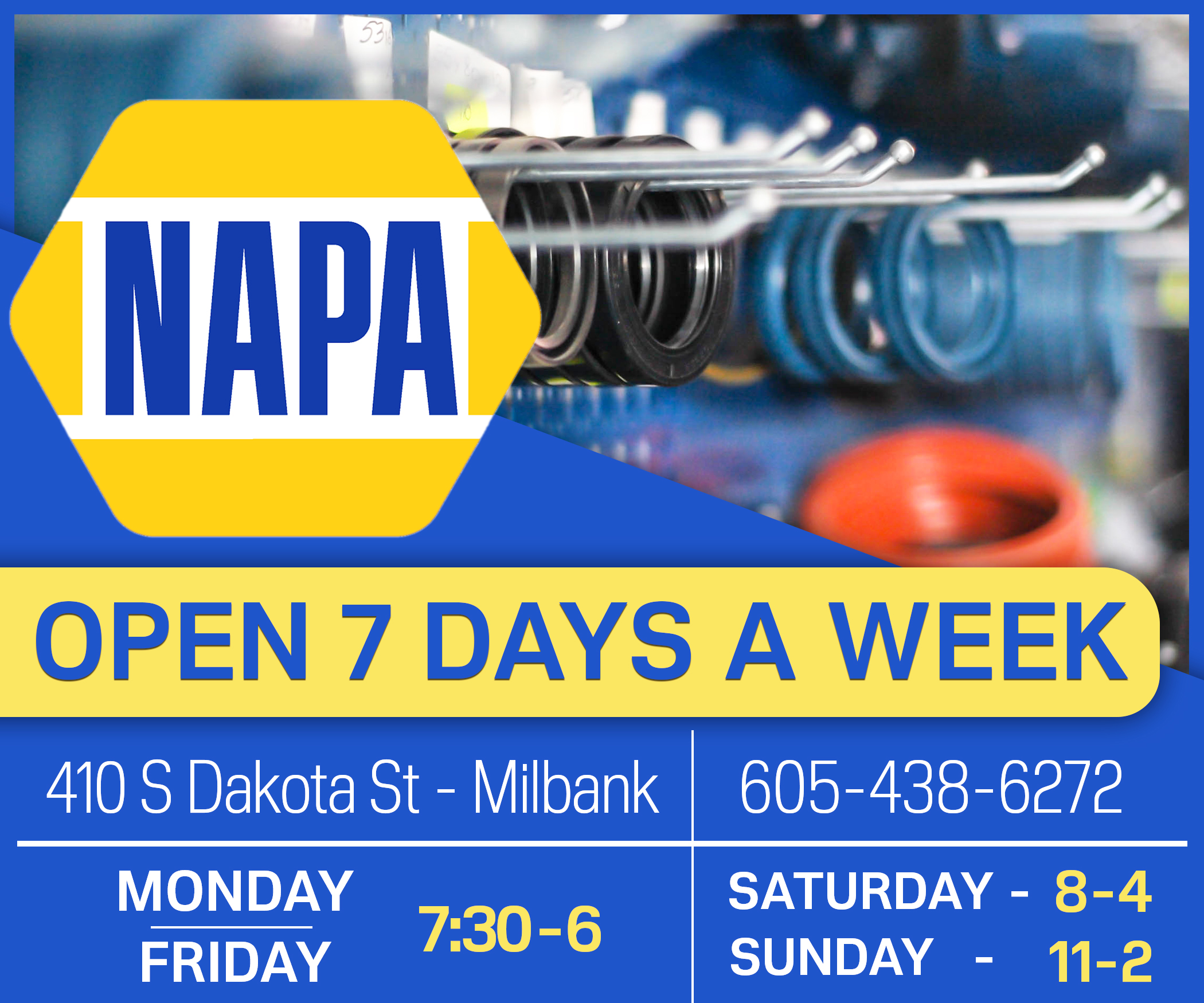ASK ARLO: Local Granite Quarries, Birthplace of American Legion Baseball
Ask Arlo May 18, 2016 Arlo Levisen 1


Arlo Levisen is the President of the Grant County Historical Society. He has extensive knowledge on the history of the area, including: Grant County History, Big Stone Lake History, the History of the Holland Grist Mill, the History of the Milbank Congregational Church and much more! Each week, he answers your questions.
Q: At the peak of production, how many granite quarries were in Grant County? Was one named the Brown Quarry? D.H.
You might already know this, but our granite, commonly called Dakota Mahogany, can be found in all 50 states and in many countries throughout the world.
Back in the 1880’s, the railroad companies quickly discovered that the rocks in this part of Dakota Territory were rather hard, but made some of the best railway track beds, once the stuff was crushed. This led to increased production.
I found two sources that describe the early days of the granite quarrying industry in Grant County – the 1939 Doris Black history book and The Grant County Historical Society’s 1978 history book. It would be nice if they agreed, but that isn’t always the case.
Doris Black provides us with a good description, as of 1939, of the quarries geographically. She says the best granite was found in a pair of outcroppings, one about five miles east of Milbank and another about a mile south of Big Stone City, along the floor of the Whetstone River. She says drilling had established about a 30-square-mile area of granite, reaching as far west as Milbank and as far south as Albee. Drilling had also extended 100 feet below the surface, with the assumption that good granite could be found as far down as three or four times that depth.
Black mentions six quarries, with the first one owned by Gust Swanson, but she gave no date. The GCHS says that Bob Urquhart opened the first quarry in 1895. One of his employees was Robert Hunter. Both men were from Aberdeen, Scotland.
Black and GCHS both say that Robert Hunter purchased 20 acres in 1908 and opened the Robert Hunter Granite Quarry. One of his employees was Alex Dewar, also from Aberdeen, Scotland. Robert Hunter named one of his quarries Royal Purple. Melrose, North Star, and Columbia also appear as quarry names. I believe, today, the Robert Hunter quarries are owned by the Dakota Granite Company.
Without getting too bogged down in names and companies, I will mention the principals of subsequent transactions, some you already met above. Alex Dewar bought out Bob Urquhart and, then in 1925, sold his holdings to Ezra Stengel. Today, it is known as the Dakota Granite Company and offers granite products in all forms.
Mr. Dewar continued to develop granite quarries, selling out for the last time, in 1938, to the Cold Spring Granite Company. Their website states they started in South Dakota in 1950. Today, Cold Spring Granite also offers granite products in all forms.
In 1925, Dewey Kadditz and Roy Steiner formed the Columbia Granite Company and hired an office manager in 1931. His name was Val Rausch. Rausch bought out Mr. Kadditz’s interest in 1934. In 1948, Rausch’s sons owned this company and sold their quarrying operation to Cold Spring Granite in 1989. The Rausch Granite Company still offers finished granite products.
This is a brief description, from books and information I have gathered over the years.
Q: How and when did Milbank become the birthplace of American Legion Baseball? P.B.
The Birch-Miller American Legion Post #9 of Milbank, South Dakota, hosted the 1925 South Dakota State American Legion Convention. The State Commander that year was Frank. G. McCormick, a Sioux Falls attorney. He invited his friend, Major John L. Griffith, of Des Moines, Iowa, the first Commissioner of the Big Ten Athletic Conference, to be the keynote speaker.
Commissioner Griffith suggested the American Legion create a program to assist in the training of young Americans using athletic games. Much discussion ensued, but a resolution was written and passed on July 17, 1925. It recommended the start of the program and was sent to the National American Legion Convention in Omaha, Nebraska. The resolution included a summer baseball league starting every year in June.
At the National Convention, a resolution was written and approved to form the American Legion baseball leagues and conduct tournaments leading to a Junior Baseball World Series. The program began in 1926.
So, American Legion baseball began in Milbank, South Dakota, in the summer of 1925, not with a game, but with a resolution to play the game. The rest is history.
Have a question on Grant County you’d like to Ask Arlo? Click here to submit your question!
Arlo Levisen
Arlo Levisen currently serves as the president of the Grant County Historical Society. He was born in Milbank in 1944 and grew up on his family's farm just east of Stockholm. Arlo attended school in Stockholm, Milbank, and South Shore. In 1967, he graduated from Northern State College with a B.S. degree in Elementary Education and History. He also earned degrees in Elementary School Administration and School Superintendency. He was employed as the Grant-Deuel School Superintendent from 1990 until his retirement in 2005. He and his wife, Paulette, reside near Big Stone Lake. They have two children and four grandchildren.











